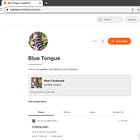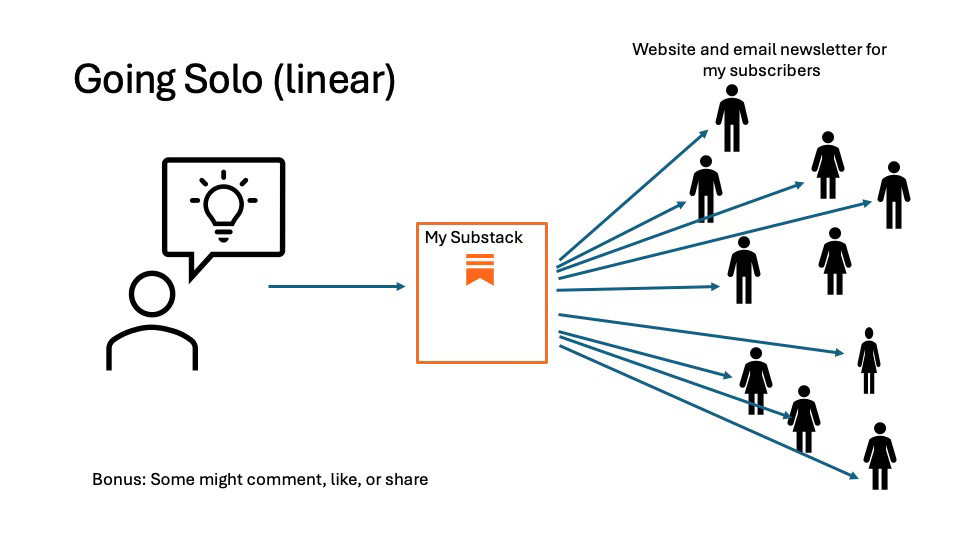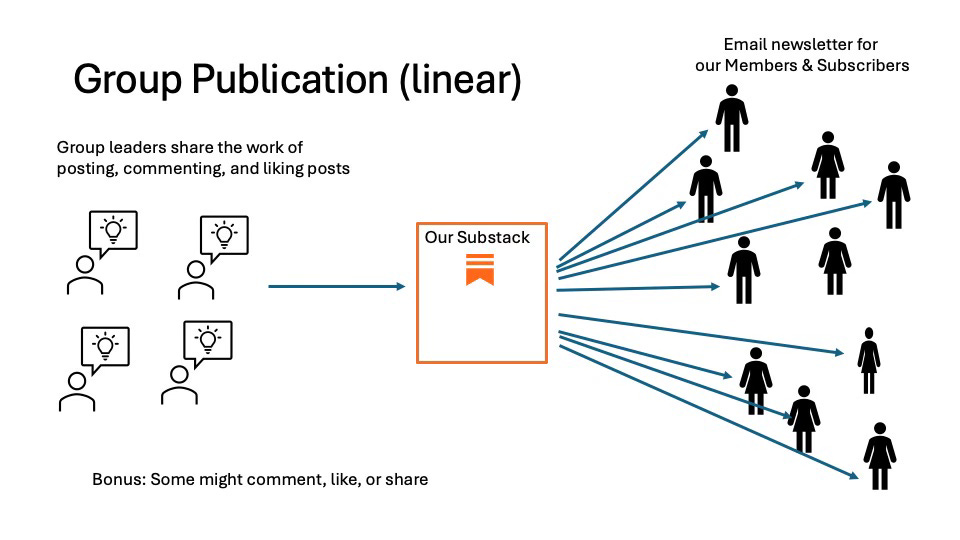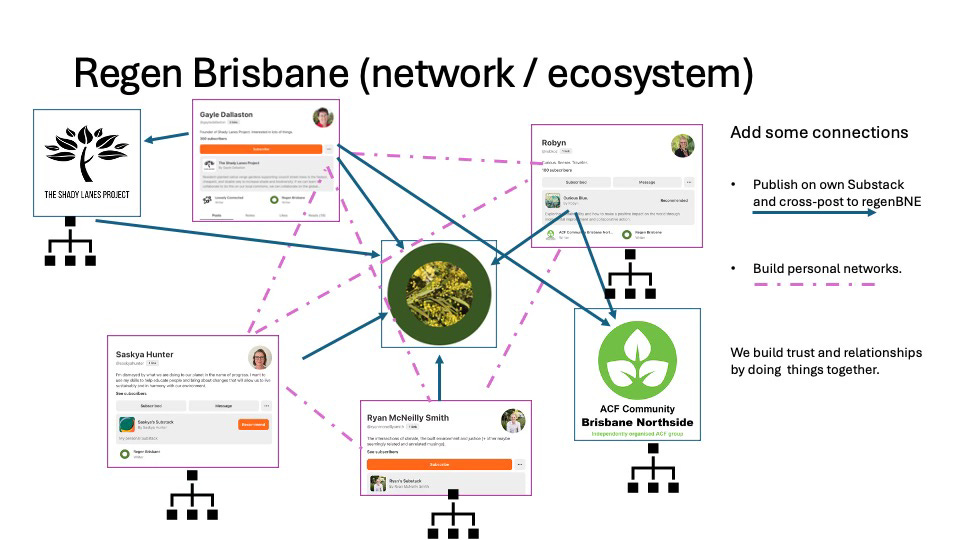How Substack Works For Networks
To create sustainable solutions, we need to connect with others to form diverse networks and collaborations. Verge gardens bring diverse people together, then we build around that to create networks.
This month, I’ve given two workshops on using Substack for groups and networks: one with Regen Brisbane on zoom, and a second with ACF Community Brisbane Northside in person. It’s a big topic, but here is a summary.
Introduction
First, we revisited two core concepts of change-making, and especially of Strategic Doing.
change happens one conversation at a time
and
we move in the direction of our conversations
And added my approach to using technology in organisations, based on decades of working in the space where people and technology meet.
The structure and technology that underpin an organisation’s communication reflects, enables, and reinforces the structure of the organisation and the practices and behaviour of its members
That’s a bit wordy, but it’s important to understand when designing communication systems and strategies. For most participants it’s invisible when everything is working well. Things just seem to happen. It’s similar to ideas of how urban design affects the choices people make, how the design of roads affects the way people drive, and it explains a lot of out-of-date websites and poor behaviour that you see on social networks.
Substack - Three Key Concepts
There are three elements that you need to be clear on to make sense of Substack
Accounts
Publications
Connections
1. Substack Accounts
If you are reading this as an email newsletter, you already have a Substack account.
Your Substack account is tied to the email address that you use to subscribe to newsletters and to log into Substack.
Your profile is connected to your account. The profile of your account is what people see if they click on your name or photo when you’ve liked, commented, or published. This is my Substack profile.
See more on setting up or editing your profile here:
2. Substack Publications
This is the slide used to illustrated how these three publications and their organisations intersect.
Here we have three separate Substack publications.
I contribute to all three.
Tony contributes to ACF Community Brisbane Northside
Robyn contributes to ACF Community Brisbane Northside and Regen Brisbane (and her own Substack)
Saskya and Ryan contribute to Regen Brisbane (and their own Substacks)
Shady Lanes Project is my Substack. I own and control it. The other two Substacks belong to the relevant group and their members decide who will be admins and contributors.
3. Connections
The third element is where the internet provides ways to bring potential networks to life. These connections create the difference between three books on a shelf, and three Substacks. You can see some outward signs (comments, links) but the movement and effects of connections are invisible, and emerging, and always evolving.
We looked at some of the ways that readers and writers can create connections. They subscribe to publications, like posts, add comments, share posts and publications, recommend publications, join chats, follow writers, create posts, create threads, add links, embed posts, cross-posting, join chats. There are more. Some people do more than others.
Subscribe, like, and comment are the easy ones that everyone can do.
Then we looked at how it can work in practice.
Going Solo or as a Group (Linear)
We talked about the traditional model used by many solo publishers and bloggers.
This is one way communication. The writer probably would love people to engage and comment but few people do.
This is a group publication. They are sharing the load but it’s still mainly one-way communication. Some subscribers might comment, like, or share. How often to you respond to a post?
Let’s Build a Network
Here we have the same three Substacks: Shady Lanes Project, Regen Brisbane, and ACF Community Brisbane Northside.
We also have four people who are actively involved in the network:
, , , and me, . See how I linked to the name. The name that shows on those links is the one you put on your profile.What’s missing is connections.
Here, we’ve added some connections to bring it to life:
The blue lines are where we publish on our own Substacks, cross-post onto another Substack, or embed someone else’s post in ours.
The pink lines? The active participants get to know each other while working towards a shared purpose. This is one way we build the trust and relationships needed for resilient and effective networks.
And just like the linear publishers, we are all sending our own posts out to the subscribers of our individual Substacks.
Intersecting Networks, and Networks of Networks
We are also part of other networks. Often these networks intersect. We find that we share some common contacts, or we introduce contacts we think should know each other.
What’s Next?
You can set up your profile even if you’re not planning on creating your own publication.
Try to build the habit of responding. If you think a post is good, click the like button to let the writer and other people know. Click the profile links to see who else has liked a post and you may find someone who shares your interests. Comment to help get conversations going, and keep them going. Conversations are more powerful than monologues. Comments can turn posts into conversations.
For paid subscribers, join the next Zoom (every second Friday or by appointment), or start a discussion to get help for your project in the Q&A thread.
This post is part of the Using Substack section. These articles are mainly for paid subscribers who are creating their own Substack for group projects.










A great summary showing the power of substack in general and for building networks.